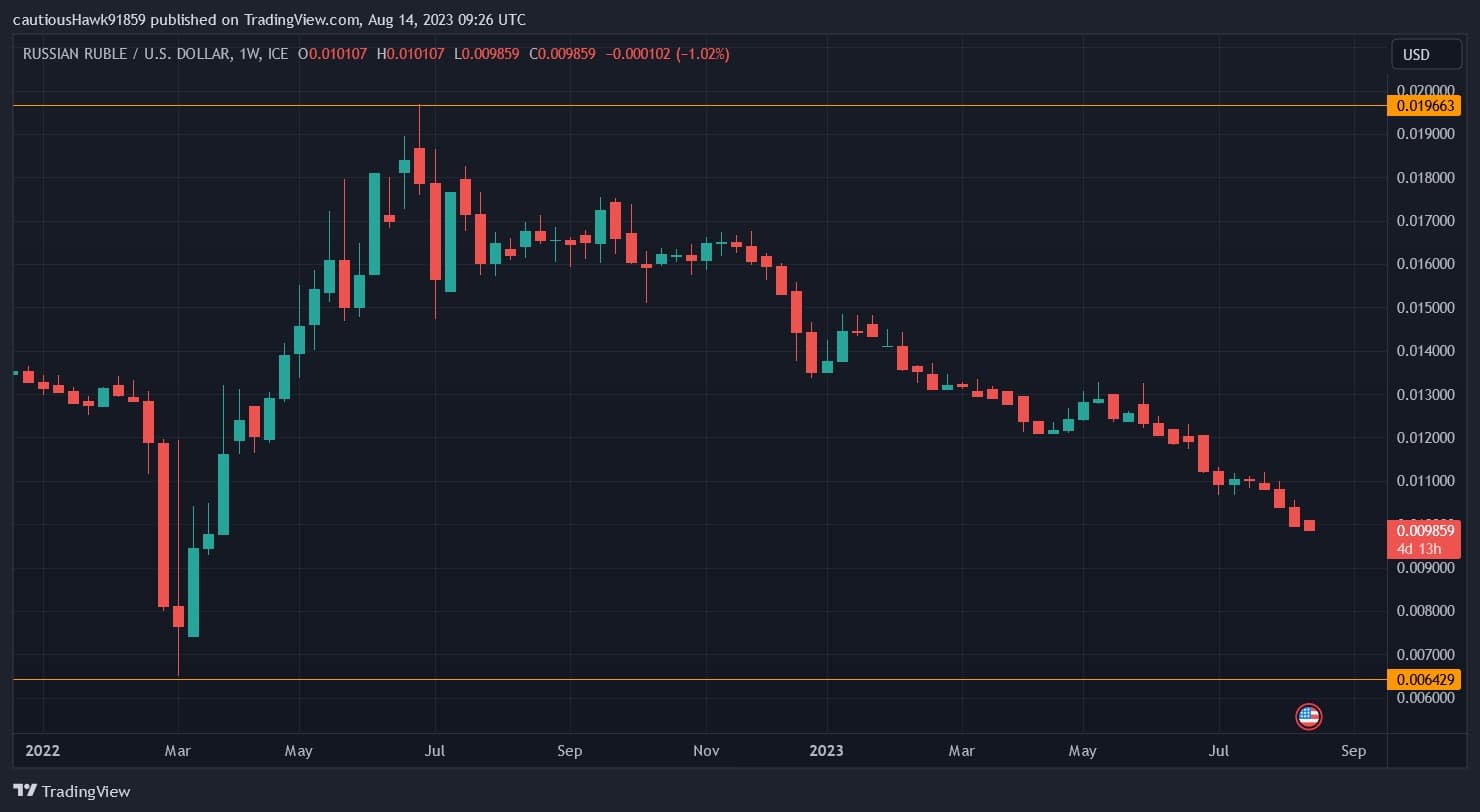Breaking away from the dollar has become the motto of Russia in recent months, joined by the other BRICS countries. But to do that, you need other strong currencies, and the rouble is looking grey this week. It has reached a level not seen since March 2022, and is struggling to hold up against a backdrop of war in Ukraine and inflation. What do you think
?
Ruble reaches same level as March 2022
Russia invaded Ukraine in February 2022, triggering a war that has been bogged down ever since. In response, the Russian rouble (RUB) plummeted, reaching a low point in March of the same year. And it has just hit that low again: at the beginning of the week on the Moscow Stock Exchange, a dollar was being bought for more than 100 roubles.

Evolution of the Russian rouble (RUB) since the beginning of 2022
Maintaining the status of the rouble is a major issue for Moscow, which needs a strong currency to continue the war in Ukraine. The international community has imposed tough economic sanctions on the country, which has found itself cut off from the SWIFT payment system.
Inflation fears and the hope of de-dollarisation for the Russians
The Russian population is already suffering significant economic consequences as a result of the conflict unleashed by Vladimir Putin. Access to foreign currencies – including the dollar – is limited, and few “reserve” assets are accessible. By spring 2022, inflation had also exceeded 17%. The continued fall in the rouble is once again raising fears of a substantial rise in prices.
In response, Russia is banking on the process of “de-dollarisation”. Alongside the “BRICS” countries, it regularly calls for a focus on local currencies rather than the US greenback. Officially, this applies to all countries, but it is of course more pressing for those subject to sanctions, including Russia, Iran and China. However, a spokesman for the BRICS bloc explained over the summer that this was a fundamental trend: “
“.
In the near future, it is unlikely that this [a common currency] will be feasible, but the use of national currencies is already a reality that is growing globally. This practice is not only visible in countries facing sanctions, but also in others “
So the status of the rouble is not just about the everyday lives of Russians, it’s about a major ideological shift. The dollar will lose its predominance, but will the rouble be one of the currencies that emerge stronger? That remains to be seen.
